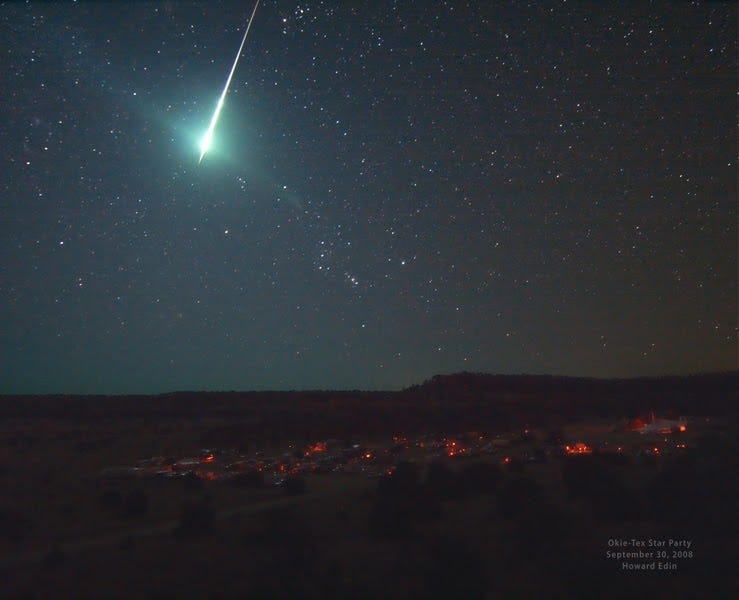On July 28th, 2020, a meteor shot through the sky right in front of musician and Twitter user Amber Coffman. Bolide meteors are incredibly rare, and it’s even rarer for a human to capture them on camera.
Almost immediately, newsrooms around the world were asking her two questions in repose to her tweet: ‘1, did you shoot the footage yourself and 2, can we use your video on our channel/website?’
The first question was a fact-checking question. Many newsrooms have learned the hard way that just because someone uploads a video on their own social media platform, or forwards it on a messaging platform, doesn’t mean they shot it themselves. The second question was also pretty standard. When a video goes viral on social media newsrooms want to get their hands on it.
But Amber did something that we don’t see very frequently. She declined, replying “Hi, I did film this but I do not consent to your terms!” to multiple requests.
The rising dependence newsrooms have on acquiring videos shot by the general public — or User Generated Content (UGC) — has raised an interesting conundrum: Should publications pay their sources for the video footage they’ve shot, just like they’d pay a freelancer or stringer?
It’s not possible for journalists to be everywhere at once. And since the start of the digital age, newsrooms have been forced to scale down and increasingly rely on desk reporting. Funding for journalists to travel to report on stories has reduced dramatically. Many local publications have collapsed — unable to make a sustainable business model work online.
So it’s not surprising that many journalists are scouring the internet for videos from the public when major or rare events occur — from protests to natural disasters, and even interesting natural phenomena like the meteor observed by Amber.
Historically, journalists haven’t paid sources for content (or at least, the ethical stance has been that sources should never be paid, though we know that in situations like leaks and gossip, this isn’t always the case). The ethical concern is this: if you pay a source, can you trust the information they’re giving you? Or are you incentivising them to give you juicier or inaccurate information just to ensure they get paid?
In today’s context, this gets a little murkier. Because the question now is: if a member of the general public has put work or gone out of their way to acquire footage that a media organisation wants, is it fair for the media organisation to make money off that footage while none of it trickles down to the person who shot it?
Currently, there are many organisations that pay for or license UGC. Media publishers like Unilad will pay £100 for video submissions that they end up using. The Daily Mail has a similar model. Even Reuters get licensed UGC videos from aggregators like Jukin Media and Storyful that might have paid the creator for the rights.
For newsrooms that don’t have a business model structured around acquiring and publishing UGC, building a sustainable UGC model is tough. Because without paying for footage, it can be hard to incentivise. Why would the public go out of their way to shoot and send videos regularly? That doesn’t mean it’s not possible, but it means a lot of scouring the internet for the next viral video.
WATCH OUT FOR…
If you’re interested in learning more about how to shoot and edit videos on the phone, the Facebook Journalism Project India group is hosting an Ask Me Anything session with freelancer Sanshey Biswas and Mongabay Digital Editor Manon Verchot. The session is open to all Indian journalists who join the Facebook group.
Sanshey and Manon will answer questions about how to source footage, and how to do basic editing.
ABOUT THIS NEWSLETTER
This newsletter is an attempt to keep up and share all the latest and greatest stories in media and how they get done. Read about it here: About In Old News-Letter
And if you were forwarded this newsletter, here’s how you can sign up to get the latest editions as they come out!

